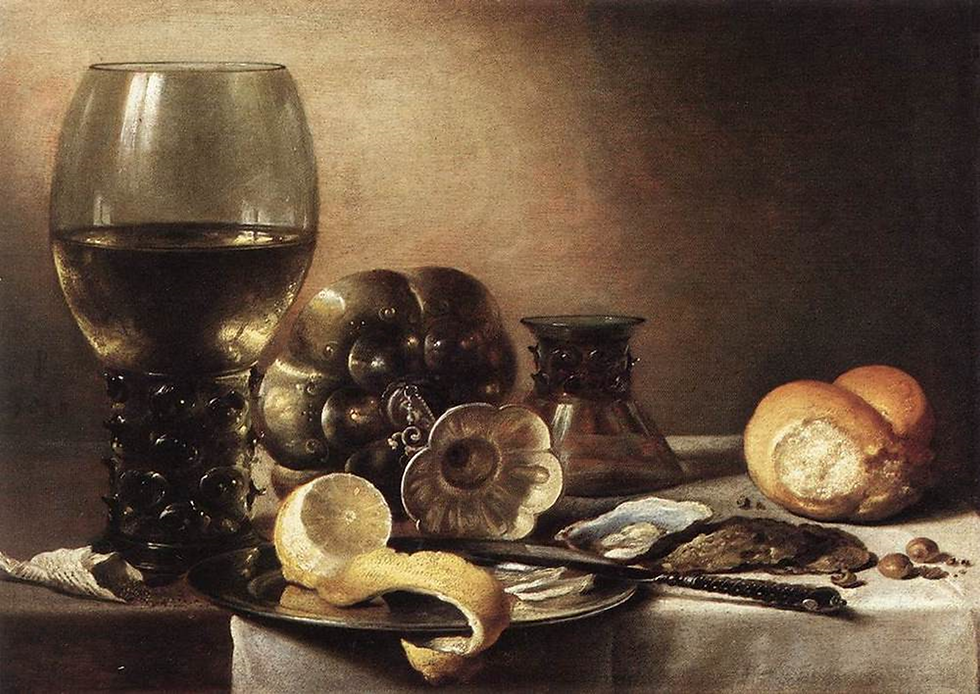Week 1 - Painting Analysis
- yatian Qian
- Sep 25, 2022
- 1 min read
Updated: Feb 18, 2023

Image 1. Pieter Claesz, Still Life with Oysters, 1633
So, for this painting, the first thing I want to mention is that it is almost monochrome except for the orange and lemon. This bronze tone and twilight-type light make me feel that everything is about to end.
We could see there are shadows of windows on the glass, it’s like a scene in a house where there is a person who ate at this table and is no longer there.
There are a peeled and chopped lemon, an orange that had been eaten, and an opened oyster. These things both easily perished once opened, which created some kind of urge and feelings of inevitable.
One more thing I would like to mention is the location of the plate and knife. They are both at the edge of this dining table, it presented a fragile peace that is likely and easily broken by something.
Image Reference List
Image 1. Pieter Claesz. (1633). Still-Life with Oysters. Available from: File:Pieter Claesz. - Still-Life with Oysters - WGA04964.jpg - Wikimedia Commons. [Accessed 17th February]
Thank you!



Comments